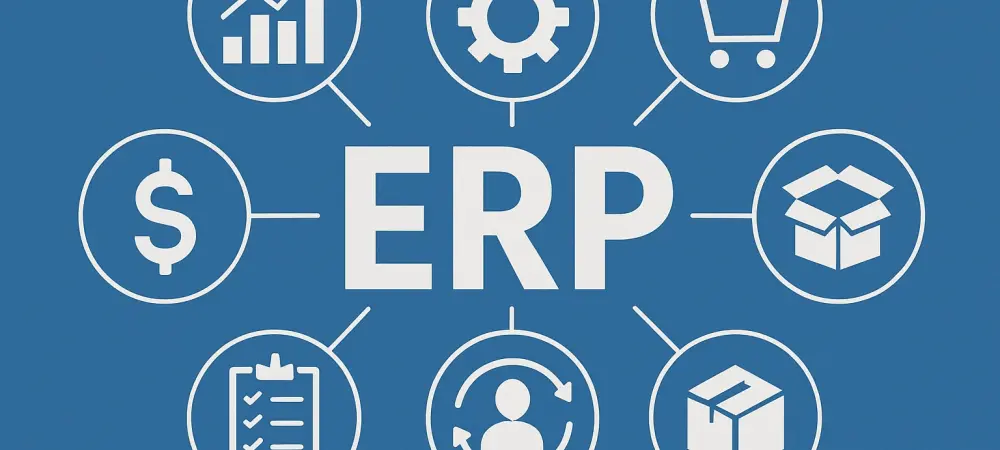In today’s fast-paced industrial landscape, selecting the right Enterprise Resource Planning (ERP) system can significantly influence a company’s operational efficiency and competitiveness. For discrete manufacturers navigating their digital transformation, the decision often boils down to choosing between traditional systems like Visual Manufacturing ERP and more modern solutions such as Microsoft Dynamics 365 Business Central. This article delves into the critical differentiators between these two ERP systems, highlighting the implications for businesses aiming to optimize production processes and embrace digital evolution.
Introduction to Visual ERP and Business Central
Visual ERP, which made its debut in the 1990s, was designed to cater to small and mid-sized manufacturers. It was an efficient tool for managing production schedules and inventory, offering commendable functionality for its time. However, as technology advanced, Visual ERP struggled to keep pace, becoming less relevant in today’s cloud-dominated business environment.
On the other hand, Microsoft Dynamics 365 Business Central emerges as a robust, cloud-native ERP solution designed to meet modern business demands. Tailored for a wide array of industries, including discrete manufacturing, Business Central provides comprehensive tools for financial management, project management, and supply chain operations. As businesses increasingly lean toward integrated systems that support remote work and real-time data analytics, Business Central offers a versatile alternative to traditional ERP systems.
Key Feature Comparisons
Technological Infrastructure
Visual ERP operates on a client-server model, a relic of past technological paradigms that impedes its ability to support dynamic business needs such as remote work and scalable digital workflows. This infrastructure can pose challenges in adapting to a cloud-based environment, as businesses must rely on on-premises servers that limit flexibility and remote accessibility.
Conversely, Business Central’s cloud-native architecture is built in alignment with current technological trends. It supports remote operations and boasts easy scalability. Such capabilities are vital for businesses seeking to expand digitally without the constraints of older infrastructure. The ease of accessing and managing data over the cloud enables seamless integration across various platforms, ensuring that operations stay uninterrupted even in remote settings.
Integration and Customization
Regarding integration capabilities, Business Central stands out with its seamless interoperability within Microsoft’s extensive ecosystem. This integration allows businesses to leverage tools like Microsoft Teams and Microsoft 365, enhancing productivity and communication. Moreover, Business Central’s customization options are straightforward and adaptable, enabling users to tailor the system effortlessly.
Visual ERP, while functional, offers limited add-on support and customization flexibility. Businesses find it challenging to modify the system to meet specific requirements, resulting in operational inefficiencies. The rigidity in customization often means companies must adapt their processes to fit the ERP rather than the other way around.
Data and Reporting Tools
Data management and reporting are crucial for informed decision-making in any enterprise. Business Central integrates smoothly with Power BI, providing advanced data visualization and reporting capabilities. This integration facilitates real-time insights into business operations, empowering companies to make strategic decisions based on comprehensive data analysis.
In comparison, Visual ERP relies on Crystal Reports, which, while traditional, do not offer the same level of interactivity or integration. This limitation in data handling can hinder the ability of businesses to derive actionable insights swiftly. The lack of advanced data tools in Visual ERP results in less efficient data visibility and reporting, impacting overall business intelligence.
Challenges and Considerations
While transitioning to Business Central offers numerous advantages, it is not devoid of challenges. System migration from Visual ERP to Business Central can be complex, requiring detailed planning and execution to ensure data integrity and minimize disruptions. Additionally, user adaptation is another hurdle; organizations need to invest in training to ensure that employees can effectively use the new system.
Concerns surrounding Visual ERP include technological obsolescence and a noticeable decrease in development efforts, making it less appealing to businesses with growth ambitions. Its inflexibility and limited support for modern add-ons present significant drawbacks for companies seeking an agile and future-proof ERP solution.
Conclusion and Recommendations
The comparison between Visual ERP and Business Central highlights the latter’s clear advantages in aligning with modern business needs. Business Central’s cloud-native design, robust integration, and advanced data tools position it as a formidable choice for enterprises aiming to enhance operational efficiency and scalability. Its adaptability and continuous updates ensure that businesses can remain agile in a rapidly changing digital landscape.
For enterprises currently operating on Visual ERP, the shift to Business Central may signify an essential step toward sustained growth and competitiveness. Though the transition requires careful management to overcome challenges like system migration, the potential benefits far outweigh these hurdles. Business Central is recommended for manufacturers seeking to modernize their ERP infrastructure and build a resilient foundation for future development. A deliberate move to such a sophisticated system positions organizations to thrive in the complex environment of contemporary manufacturing and beyond.

